How to Starting a Profitable Shopify Dropshipping Store

Picture yourself embracing the freedom to explore endless product possibilities while leaving the hassle of shipping logistics behind. Welcome to the realm of Shopify dropshipping – a gateway to entrepreneurial success in the digital age.
In this blog, we invite you to embark on an exciting journey as we unravel the secrets of creating an effective dropshipping store using the power of Shopify. Before going into the details, make sure you have build an eCommerce store on Shopify from 1 Dollar!
What is Shopify Dropshipping?
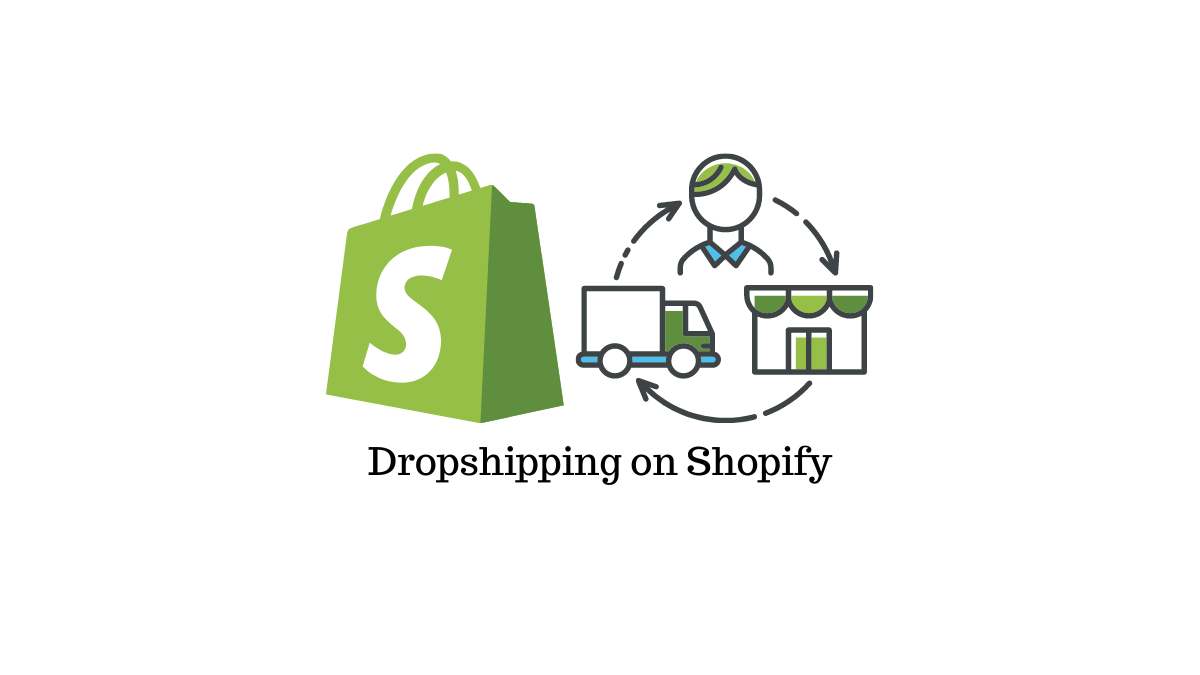
Dropshipping is an innovative eCommerce business model that offers a unique opportunity for creators and entrepreneurs to sell products through an online store without the need to handle inventory or fulfill customer orders themselves. In this arrangement, the store owner collaborates with a separate supplier who manages inventory and handles order fulfillment on their behalf.
In a Shopify dropshipping business model, creators and entrepreneurs leverage the power of Shopify's platform to launch their online store. By selecting a reliable dropshipping provider, they can seamlessly integrate their store with a supplier who takes charge of packaging and shipping the products to customers.
Benefits of Shopify Dropshipping

1. Have it all at Shopify
Shopify is renowned as one of the leading e-commerce platforms for merchants. With Shopify, you get an all-in-one solution that covers every aspect of your dropshipping business. From store setup to payment processing, inventory management, and even the ability to integrate third-party apps, Shopify provides a comprehensive suite of functionalities to enhance the performance and efficiency of your online store.
2. Easy to use for both professionals and novices
Whether you're an experienced e-commerce expert or just starting your entrepreneurial journey, Shopify offers a user-friendly interface catering to all skill levels. The platform's intuitive design and straightforward setup process make it a breeze to navigate, while its robust customer support ensures that help is readily available whenever you need it. With Shopify, you can focus on building your business without getting bogged down by technical complexities.
3. No upfront investment is required
One of the major advantages of dropshipping with Shopify is the ability to start your business with little to no upfront investment. Unlike traditional retail models that require purchasing inventory in bulk, dropshipping enables you to launch your store within hours without needing costly inventory. This eliminates the financial risks associated with stocking products upfront, allowing you to allocate your resources strategically and invest in other aspects of your business, such as marketing and customer acquisition.
4. No worries about inventory
Say goodbye to the headaches of inventory management. With drop shipping, you don't have to worry about storing, packaging, or shipping products yourself. Your chosen dropshipping suppliers handle all of these tasks on your behalf. This means that the amount of products you have in your store directly corresponds to your customers' demands, ensuring that you only order products from your suppliers when an order is placed. By eliminating the need for excess inventory, you can focus on providing exceptional customer experiences while reducing the risk of unsold products.
5. No shipping costs
Shipping costs can eat into your profits and complicate logistics. However, with Shopify dropshipping, this concern has become a thing of the past. Since you don't handle shipping directly but rely on your suppliers to fulfill orders, you don't incur any shipping costs. Your customers pay for shipping at checkout, and your dropshipping suppliers take care of the rest. This saves you money and simplifies the order fulfillment process, allowing you to focus on growing your business and delivering a remarkable customer experience.
Right now, Shopify is offering a huge deal of 3 months for just $1 per month. Don’t miss out!
Grab $1 Deal Now!7 Steps to Start a Dropshipping Store with Shopify
1. Choose your dropshipping product line
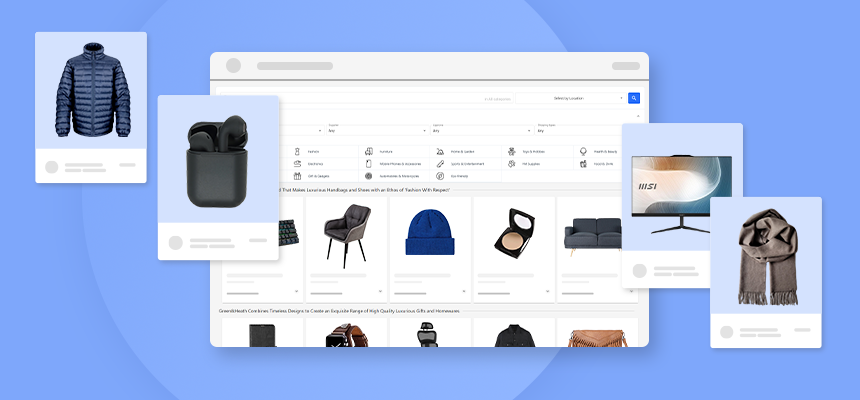
Selecting a profitable and in-demand product line is crucial in starting your Shopify dropshipping store. Begin by identifying a niche that aligns with your interests and has potential customer demand. Conduct market research using social media, Google Search, and Google Trends to gauge consumer interest and identify trendy products within your chosen niche.
Analyze the competition in your selected niche to understand the existing product offerings. Differentiate your product line by offering unique designs or variations that set you apart from competitors. Some popular dropship product categories include adult apparel, child and baby clothing, accessories, home decor, drinkware, and stationary.
By carefully choosing your dropshipping product line, you can position your store for success and cater to the needs and preferences of your target audience.
2. Create a Shopify account
It's time to create a Shopify account to bring your dropshipping store to life. You can start with a 3-day free trial to test the platform or dive right in with a paid plan. However, with Shopify's user-friendly interface and powerful features, you will likely be convinced of its value during the free trial.
Choose the pricing plan that best aligns with your current needs and budget. Shopify offers three plans, with the Basic plan being the most affordable, providing simple reports and two staff accounts. On the other hand, although the most expensive, the Advanced plan offers advanced features like a custom report builder and up to 15 staff accounts, catering to more established businesses.
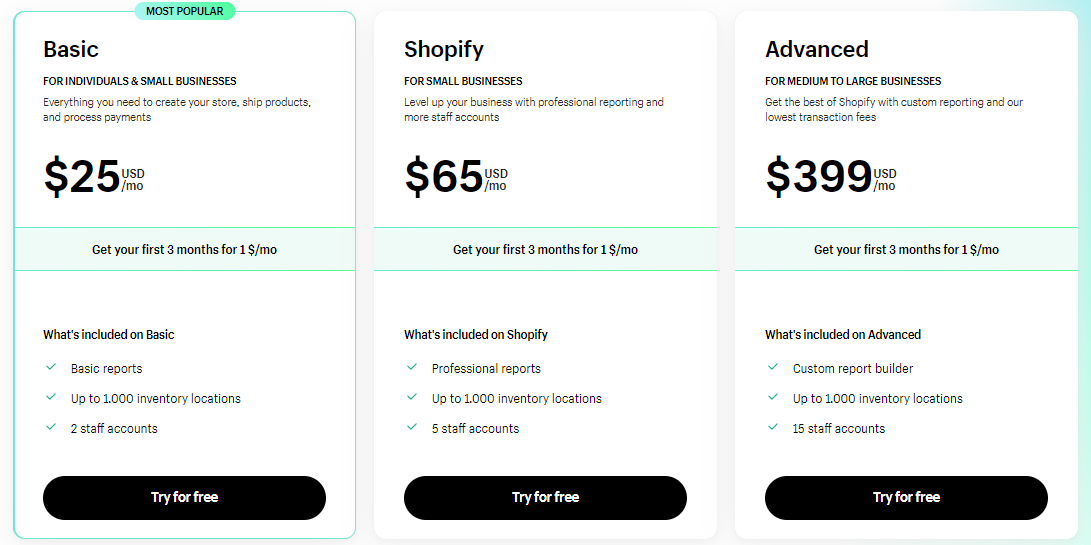
Read more: Everything about Shopify Plans and Pricing
Selecting the right plan ensures you have access to the tools and resources to run your dropshipping store effectively. Remember, as your business grows, you can upgrade your plan to unlock additional features and benefits.
3. Select a print-on-demand supplier
A reliable dropshipping supplier is crucial for fulfilling customer orders and ensuring the success of your Shopify dropshipping store. While exploring different options, pay attention to print-on-demand (POD) providers. Like traditional dropshipping, POD allows you to purchase inventory per order, but with the added benefit of customizing products with unique designs.

(source: EComposer POD template)
When choosing a POD supplier for your Shopify dropshipping store, consider the following criteria:
- Level of customer service: Look for a provider that offers robust technical support, such as a centralized Help Center and live chat, to address any concerns or questions.
- Product selection and quality: Choose a POD provider that offers a diverse range of popular eCommerce products, including customizable apparel, home décor, accessories, drinkware, and stationery.
- Average production and delivery time: Opt for a POD supplier that integrates seamlessly with Shopify to accelerate the fulfillment process.
- Provider sustainability and ethics: Prioritize a POD provider demonstrating a commitment to sustainability and ethical practices. Consider factors such as a local supply chain and reduced transportation distances, contributing to lower carbon emissions per order.
Read more: Best Shopify Apps For Dropshipping
4. Customize your Shopify store
To make your Shopify dropshipping store truly unique, it's important to customize its appearance and create a brand identity that stands out. Select a memorable store name that reflects your niche and resonates with your target audience. Your store name should be simple, memorable, and relevant, giving customers a clear idea of your brand's personality.
Next, explore Shopify's wide range of free and paid themes to design your storefront. Utilize the theme editor to experiment with different fonts, colors, buttons, and other visual elements, ensuring your store's design aligns with your brand identity. The goal is to create a visually appealing and engaging customer experience, leaving a lasting impression.
In addition, take advantage of third-party apps to further customize your store. Consider using apps like EComposer - Shopify Page Builder, which provides beautiful templates, over 200 sections, and unique elements and extensions. This app allows you to easily create various pages, such as the Home Page, Landing Page, Product Page, Coming Soon Page, and Contact Us, enabling you to design a professional and captivating website that showcases your products effectively.
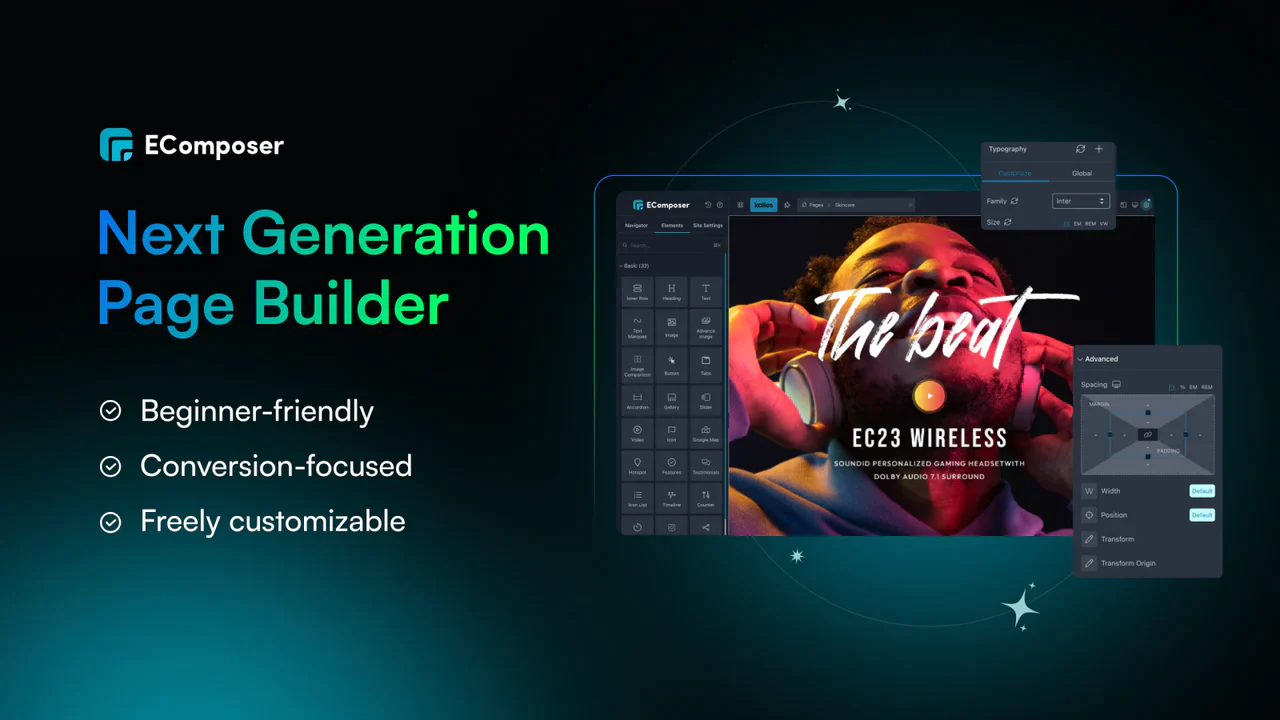
By customizing your Shopify dropshipping store with a well-chosen store name, appealing design, and the right apps, you can create a visually stunning and seamless shopping experience for your customers, setting your store apart from the competition and establishing a strong brand presence.
5. Add your products to your store
Now that your Shopify storefront is set up, it's time to prepare compelling product listings to attract and engage your customers. Follow these steps to create enticing product listings:
- Capture high-quality product photos: Take vibrant images with good lighting and simple backgrounds. Consider showcasing apparel on models for better visualization.
- Craft detailed product descriptions: Create informative and persuasive content highlighting product features, dimensions, and benefits. Incorporate relevant keywords for improved search engine visibility.
- Integrate with print-on-demand: Seamlessly connect your chosen print-on-demand provider to your Shopify store. Automate order forwarding for efficient fulfillment.
To further enhance user experience with images, you can display optimized images in engaging, shoppable galleries. This creates a seamless browsing experience that invites customers to explore your products, boosting both satisfaction and conversions. We recommend trying Nitro Lookbook, an app equipped with everything you need to create interactive images and lookbooks for your Shopify store.
6. Launch and manage your online store
With your products prepared and your Shopify store ready, it's time to launch your dropshipping business. Follow these steps to ensure a smooth launch and effective management of your online store:
- Set up payment and shipping options: Configure payment gateways and shipping settings, and establish shipping costs to provide accurate and efficient delivery options. Create a clear refund policy to handle exchanges or returns.
- Provide customer support: Enhance the shopping experience by offering multiple channels for customer inquiries, such as email, live chat, or support tickets. Promptly address customer queries, concerns, or issues to build trust and satisfaction.
- Monitor business performance: Analyze key metrics like conversion rate, sales revenue, average order value, and customer lifetime value. Gain insights from your Shopify dashboard to assess your marketing strategies' effectiveness and identify improvement areas.
7. Market your dropshipping store
To take your Shopify dropshipping store to the next level, it's essential to implement an effective marketing strategy. Here are some key tactics to help you grow your business:
- Utilize paid ads: Leverage paid advertising on Google, Facebook, and Instagram to drive targeted traffic to your store.
- Harness social media marketing: Build brand awareness and engage with potential customers through captivating content and community interaction.
- Leverage email marketing: Stay connected with your customer base through email campaigns, informing them about promotions and new product releases.
- Incorporate influencer marketing: Collaborate with influencers who align with your niche to increase visibility and drive traffic to your store.
Tips for Shopify dropshipping businesses
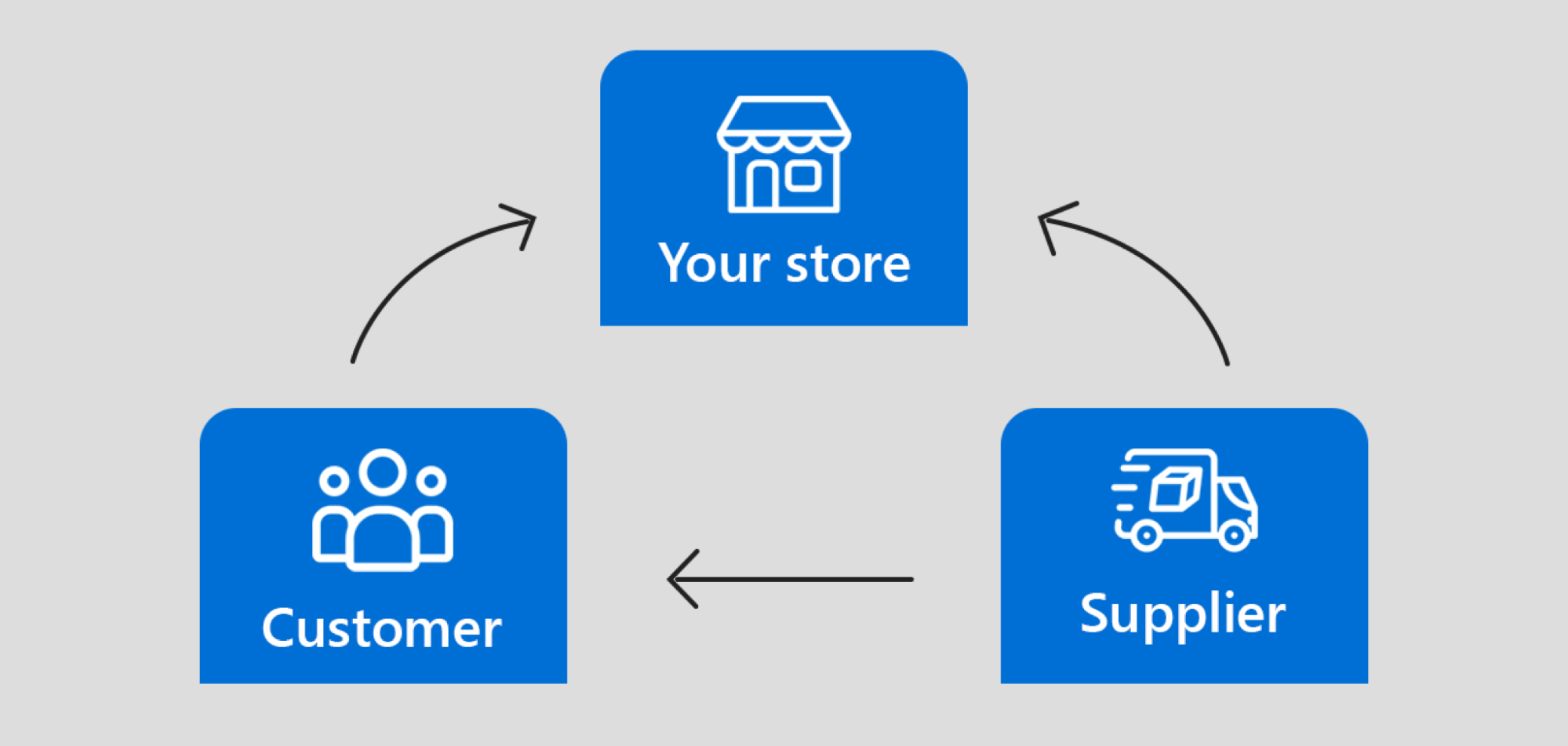
1. Stay Connected with Your Business Partners
In Shopify dropshipping, maintaining open communication channels with vendors and suppliers is essential. Whether you need customizations or additional product information, being accessible ensures smooth collaboration and timely fulfillment. Prioritize effective communication for a successful dropshipping business.
2. Establish Clear Rules for Smooth Returns
To save time and effort, create clear rules for returns and refunds before launching your Shopify dropshipping store. Check with your suppliers, define your policy, and ensure a seamless process. Well-defined policies contribute to a positive customer experience and business success.
3. Engage and Assist Your Customers
In Shopify dropshipping, providing exceptional customer support is essential. Offer chat, phone, and email support maintain an informative FAQ section and assign someone to handle social media inquiries. Engaging with customers ensures their satisfaction and helps retain their interest in your brand.
4. Implement Effective Marketing Channels
After launching your Shopify dropshipping website, it's time to focus on promoting your store. Invest in the following marketing strategies:
- Search Engine Optimization (SEO): Optimize your website to improve search engine rankings and drive organic traffic.
- Content Marketing: Create valuable content that educates and addresses the needs of your target audience, enhancing your SEO efforts.
- Social Media Marketing: Leverage the power of social media platforms like Facebook and Instagram, utilizing Shopify's seamless integrations to reach a wider audience.
- Influencer Marketing: Collaborate with influencers with a significant following to amplify your brand's reach and boost sales.
- Email Marketing: Build an email list to engage with customers, sending newsletters, special offers, and promotions to drive additional sales.
- Paid Advertising: Utilize platforms like Google Adwords and Facebook Ads to target potential customers actively searching for your products and increase brand exposure on social media.
5. Simplify Financial Management with Automated Accounting
To ensure the financial stability of your dropshipping store, it's crucial to have your finances in order. Consider leveraging automated accounting software to streamline your financial management process. Here's how it can benefit your Shopify business:
- Automated Transaction Synchronization: Simplify the recording of online transactions from your Shopify store with automated synchronization, eliminating the need for manual data entry and saving you valuable time.
- Instant Accounting Reports: Generate essential accounting reports, such as profit and loss statements and balance sheets. Gain valuable insights into your business's financial performance and make informed decisions.
- Multicurrency Support: If your dropshipping store operates internationally, ensure the smooth handling of multicurrency transactions, facilitating efficient financial management across different currencies.
By incorporating automated accounting tools into your Shopify dropshipping business, you can optimize financial processes and have a clear overview of your incomings and outgoings. This lets you focus on promoting your store and planning for future growth.
Shopify Dropshipping FAQs
1. Does Shopify charge you for dropshipping?
Yes, creating a dropshipping website with Shopify does come with monthly plan fees. Shopify offers three types of plans to choose from based on your budget and needs Basic Shopify ($29/month), Shopify ($79/month), and Advanced Shopify ($299/month). These plans provide various features and functionalities to support your dropshipping business, including access to the Shopify platform, customer support, and additional tools for managing and growing your store. While there are costs associated with using Shopify, many drop shippers find that the benefits and resources provided by the platform outweigh the monthly fees.
2. Is there a fee for Shopify?
Yes, there are fees for using Shopify. The standard plans range from $5 to $399 monthly, and transaction fees vary from 0.5% to 2.9% + $0.30. Additionally, there may be costs for apps from the Shopify App Store, ranging from free to a few hundred dollars per month. It's important to consider these fees when planning your Shopify dropshipping business.
Final Thoughts
As we end our guide on Shopify dropshipping, we hope you've found the information invaluable for your entrepreneurial endeavors. Shopify empowers you to create a successful online business without the complexities of inventory management.
By keeping open communication with suppliers, offering top-notch customer support, implementing effective marketing strategies, and leveraging automation for financial management, you can position your Shopify dropshipping store for long-term success.
If you have any questions, contact us via the4.co.
🎁 Exclusive Deals for The4 Customers

EcomRise Post Purchase Upsell
EcomRise Post Purchase Upsell helps merchants boost revenue by offering targeted upsell and cross-sell offers after checkout.
- ✅ Show post purchase upsell offers immediately after checkout
- ✅ Display thank you page upsell offer with discount
- ✅ Track upsell performance easily with GA4 integration

🎉 EComposer – Free 6-Month Plan
Build landing pages, sales funnels, and more with drag & drop.
The4 users get 6 months free (save $114).
- ✅ 100+ templates ready to use
- ✅ Build any Shopify page
- ✅ No coding required













No comments